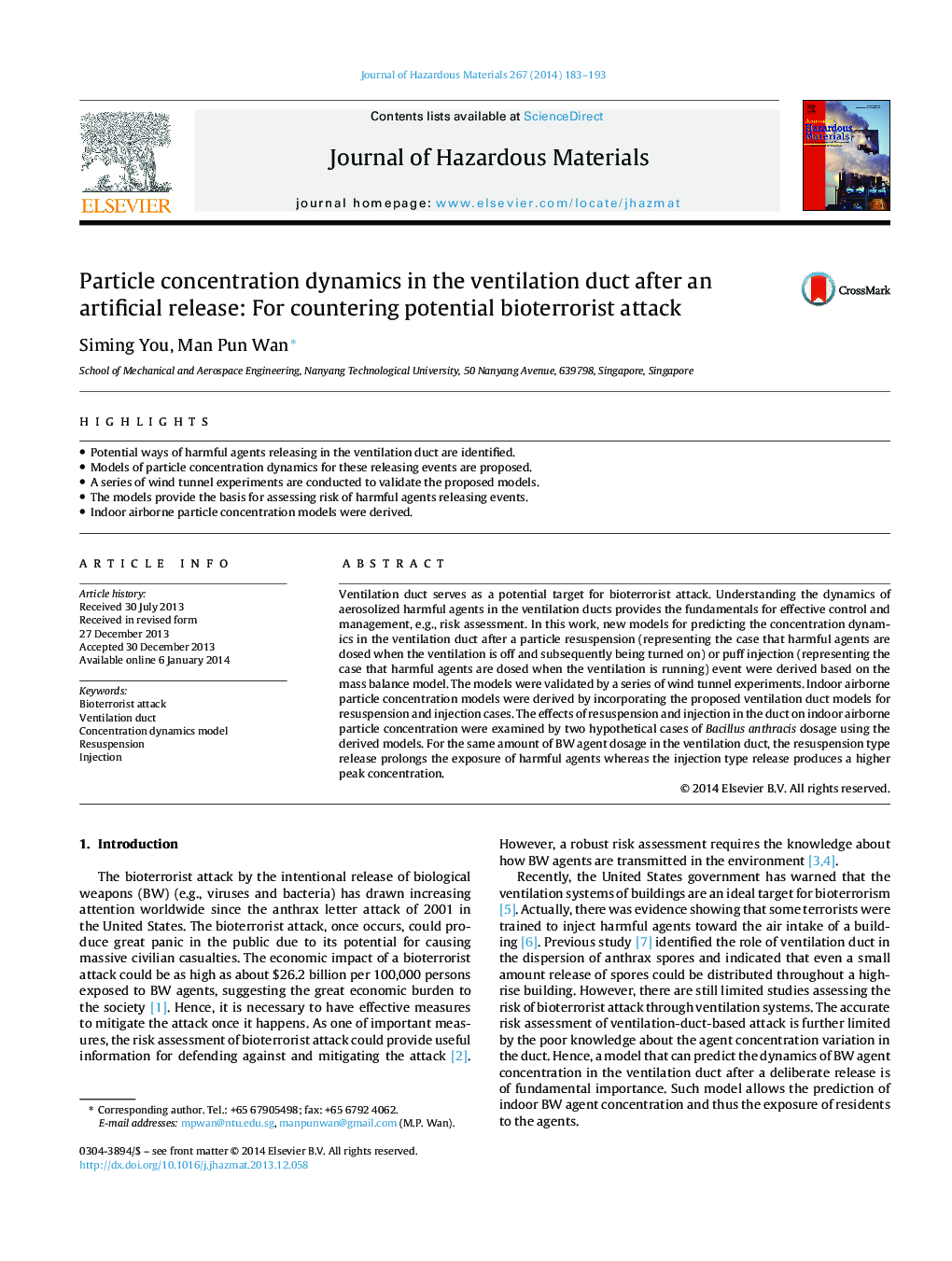| Article ID | Journal | Published Year | Pages | File Type |
|---|---|---|---|---|
| 576919 | Journal of Hazardous Materials | 2014 | 11 Pages |
Abstract
Ventilation duct serves as a potential target for bioterrorist attack. Understanding the dynamics of aerosolized harmful agents in the ventilation ducts provides the fundamentals for effective control and management, e.g., risk assessment. In this work, new models for predicting the concentration dynamics in the ventilation duct after a particle resuspension (representing the case that harmful agents are dosed when the ventilation is off and subsequently being turned on) or puff injection (representing the case that harmful agents are dosed when the ventilation is running) event were derived based on the mass balance model. The models were validated by a series of wind tunnel experiments. Indoor airborne particle concentration models were derived by incorporating the proposed ventilation duct models for resuspension and injection cases. The effects of resuspension and injection in the duct on indoor airborne particle concentration were examined by two hypothetical cases of Bacillus anthracis dosage using the derived models. For the same amount of BW agent dosage in the ventilation duct, the resuspension type release prolongs the exposure of harmful agents whereas the injection type release produces a higher peak concentration.
Related Topics
Physical Sciences and Engineering
Chemical Engineering
Chemical Health and Safety
Authors
Siming You, Man Pun Wan,
